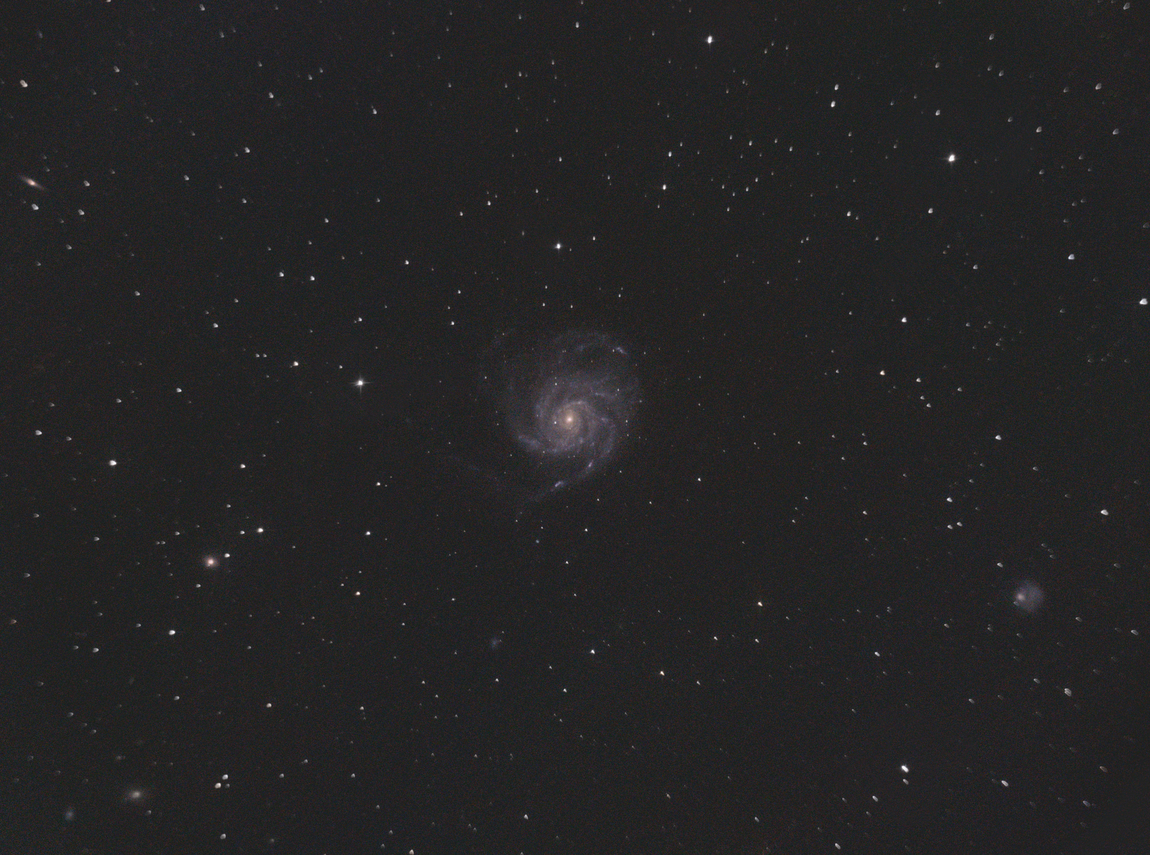M 101, The Pinwheel Galaxy
M 101, commonly known as The Pinwheel Galaxy, is a face-on spiral galaxy found just off the handle of the Big Dipper. It is around 21 million light-years away[1], and has a diameter of around 170,000 light years. It is notable for its high concentration of HII regions: clouds of ionized hydrogen gas glowing a deep red due to the same mechanism that makes certain materials glow under a black light. Unfortunately my camera at the time was not very sensitive to the specific wavelength of light generated by these clouds so they appear more white, but the largest and brightest of them are nonetheless annotated.
M 101 was one of only three objects (101-103) which Charles Messier did not personally verify through observation before adding to his ubiquitous catalog, instead relying on the word of his colleague Pierre Méchain, who had discovered about a quarter of the catalog’s entries. M 102 in particular was a subject of much controversy, because it was said to be between the stars Omicron Boötis and Iota Draconis – two stars which would not make much sense to use due to their distance from one another. Two years after the original publication of the catalog, Méchain submitted a retraction letter, stating that M 101 and M 102 “are nothing but the same nebula, which has been taken for two, by an error in the charts.” Although some ambiguity remains, most modern sources are of the opinion that M 102 is not a duplicate of M 101, arguing that Méchain had intended to write a theta “θ” and not an omicron “ο”, which would place NGC 5866 in the correct position to be the missing galaxy.
Captured using a Fujifilm X-A5 and a GSO 6" F/4 Newtonian sans coma corrector mounted on an unguided Celestron AVX. This image is a stack of 43x60s light frames taken at 1600 ISO, calibrated with 30 flats, 20 darks, and 30 biases. Reprocessed on 03/13/23 using (1) Siril for stacking, cropping, RBF background extraction, color calibration, and a generalized hyperbolic stretch, (2) StarNet++ v2 for star removal, after which the starless image got sent through (3) GIMP to patch up some walking noise with the clone stamp, reduce the background noise using the fill tool on a translucent masked layer, and adjust the color balance in the galaxy arms, then back into (4) Siril again to tweak the black point and recombine the star mask with a modified asinh stretch.
